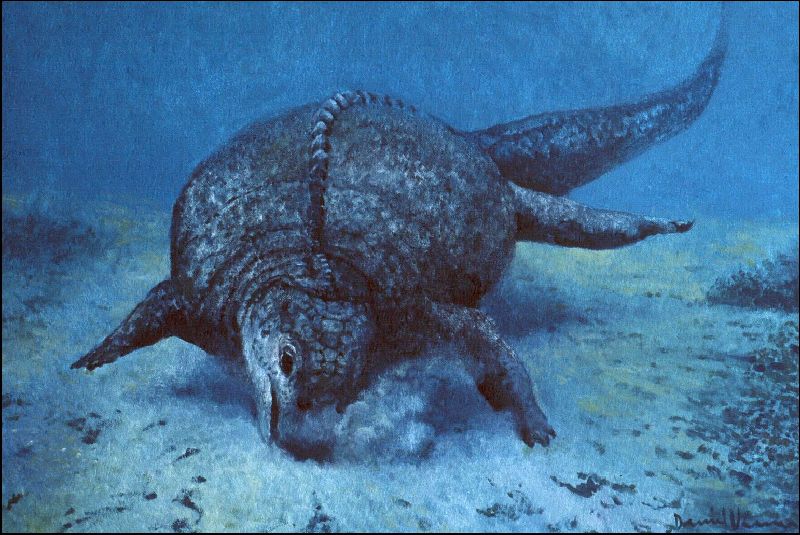 |
 |
 |
 |
 |
Produced
by the Population Genetics and Evolution class, Furman University |
||||
 |
 |
 |
 |
 |
Produced
by the Population Genetics and Evolution class, Furman University |
||||
 |
The
Triassic: Placodonts |
 |
||
| Placodonts
(“tablet teeth”) were marine reptiles that are believed to
be descended from the Sauropterygia, a group that included Plesiosaurs
(Naish 2000). First discovered in 1830, their range was previously thought
to be limited to Europe, the Middle East, and North Africa before researchers
found a specimen in Asia (Chun 2002). Placodonts were about 1 to 2 meters
in length and had armor plating, dense bones, and strong, flat teeth.
They likely fed on mollusks and other bivalves, using their large, flat
teeth to crush the shells of their prey before eating the soft parts.
Although they were amphibious, their relatively dense bodies, short limbs,
and lack of flippers or propulsive tail probably limited them to shallow
areas. Placodonts were almost certainly clumsy on land, given their awkward
suite of morphological traits. However, they did occasionally venture
onto land to rest, breed, and avoid predators (Naish 2000). They went
extinct near the end of the Triassic, most likely due to a decline in
the availability of shelled prey (Buffetaut 2008). Placodonts have no
known extant descendents (Naish 2000).
Page by Robert Mazgaj |
 |
| Placodont. Photo By: Dan Varner | |
|
Buffetaut E. and Matevz N. 2008. A cyamodontoid placodont (Reptilia: Sauropterygia) from the Triassic of Slovenia. Paleontology 51: 1301–1306. Chun L. and Rieppel O. 2002. A new cyamodontoid placodont from Triassic of Guizhou, China. Chinese Science Bulletin 47: 403-407. Naish D. 2000. Placodonts: the bizarre ‘walrus turtles’ of the Triassic. Accessed Mar. 23 2010. |